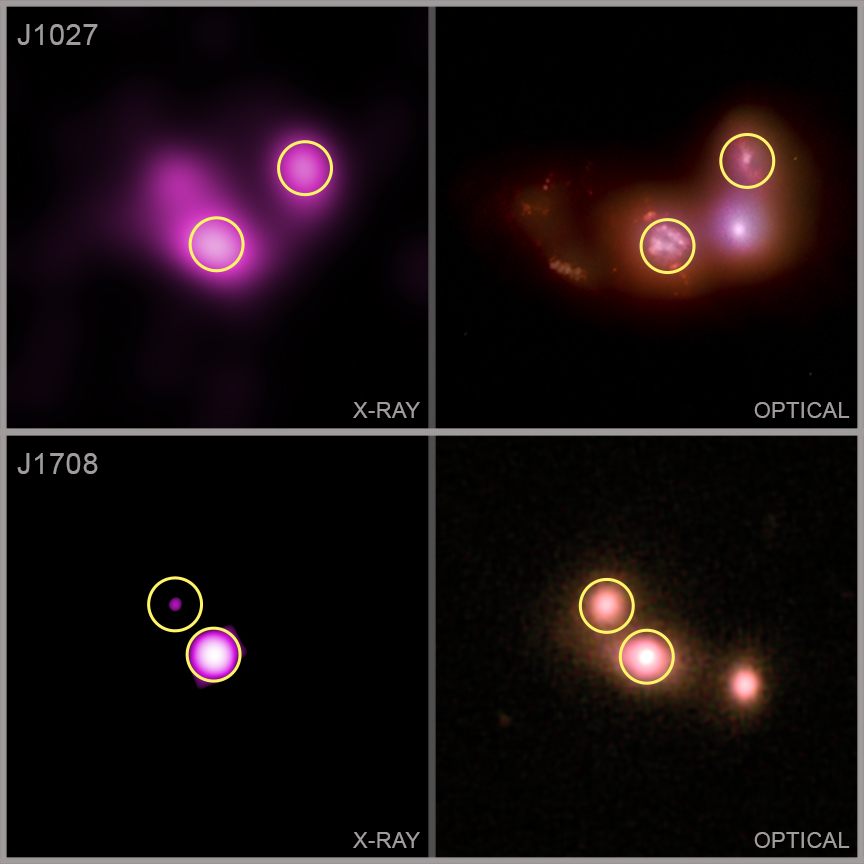
 Credit: X-ray: NASA/CXC/Univ. of Michigan/A. Foord et al.; Optical: SDSS & NASA/STScI
Credit: X-ray: NASA/CXC/Univ. of Michigan/A. Foord et al.; Optical: SDSS & NASA/STScI
Come Together
The growth of galaxies seems to be tied to the growth of supermassive black holes, and vice-versa. Extragalactic space is relatively crowded, and galaxies are often pulled together by the mutual gravitational attraction of their (mostly dark) matter. As galaxies collide and merge, the supermassive black holes they contain may eventually spiral together, rocking the Universe with a burst of gravitational waves, and leaving behind an even more super-massive black hole as a result. A new study helps show how this might happen in triple-galaxy mergers. Such triple mergers are thought to be important in the cosmic scheme of things since studies show that supermassive black hole mergers are more frequent in triple systems because the presence of a third black hole can help drive the merger of the other two. The image above shows X-ray images from the Chandra X-ray Observatory (on the left) and optical images (right) of two triple mergers, J1027 and J1708. The circled sources show the locations of X-ray bright, actively feeding supermassive black holes remaining in these two triple mergers. Seven such merging systems were studied, and they showed a variety of properties. One system showed evidence of a single accreting supermassive black hole; one showed the presence of three supermassive black holes; four systems contained two accreting supermassive black holes; and one merger showed no evidence of a supermassive black hole at all - which means that any leftover black holes there are not actively feeding on the gas and dust in the merged galaxy, orperhaps the merged supermassive black hole was flung out of the galaxy, and is now hurtling, unseen, through space.
Published: February 15, 2021
<
HEA Dictionary ● Archive
● Search HEAPOW
● Other Languages
● HEAPOW on Facebook
● Download all Images
● Education ● HEAD
>

Each week the HEASARC
brings you new, exciting and beautiful images from X-ray and Gamma ray
astronomy. Check back each week and be sure to check out the HEAPOW archive!
Page Author: Dr. Michael F. Corcoran
Last modified Monday, 26-Feb-2024 17:10:22 EST


